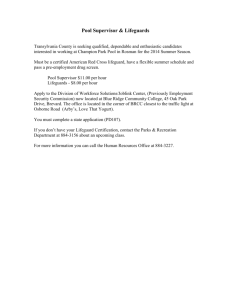Top tips to stay safe
advertisement
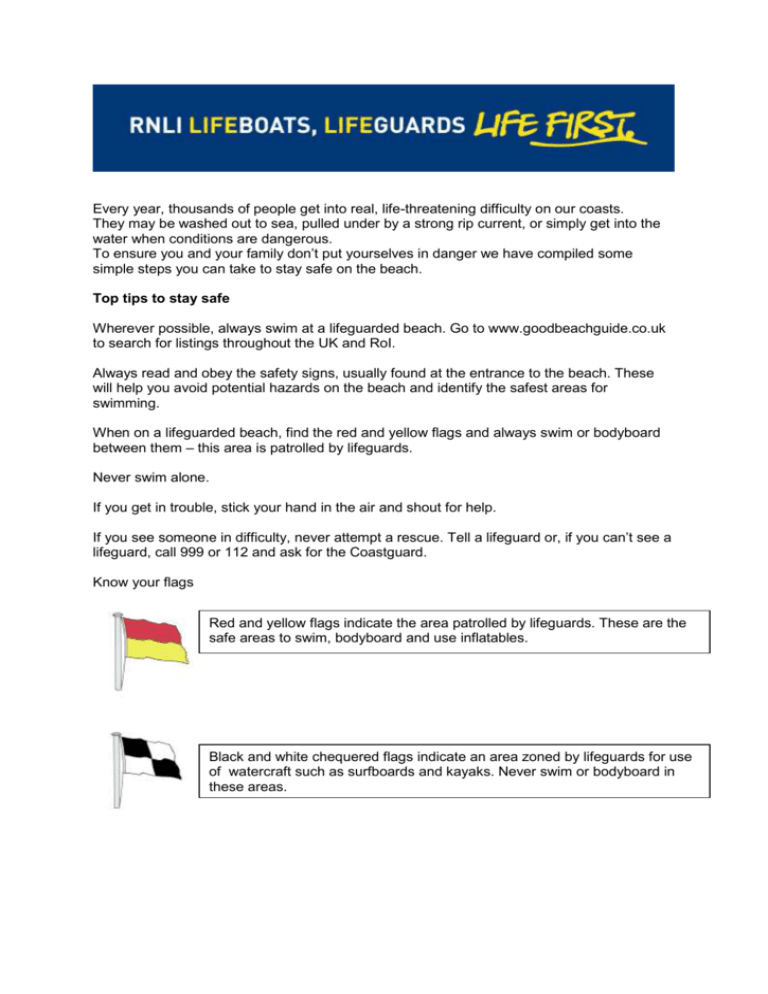
Every year, thousands of people get into real, life-threatening difficulty on our coasts. They may be washed out to sea, pulled under by a strong rip current, or simply get into the water when conditions are dangerous. To ensure you and your family don’t put yourselves in danger we have compiled some simple steps you can take to stay safe on the beach. Top tips to stay safe Wherever possible, always swim at a lifeguarded beach. Go to www.goodbeachguide.co.uk to search for listings throughout the UK and RoI. Always read and obey the safety signs, usually found at the entrance to the beach. These will help you avoid potential hazards on the beach and identify the safest areas for swimming. When on a lifeguarded beach, find the red and yellow flags and always swim or bodyboard between them – this area is patrolled by lifeguards. Never swim alone. If you get in trouble, stick your hand in the air and shout for help. If you see someone in difficulty, never attempt a rescue. Tell a lifeguard or, if you can’t see a lifeguard, call 999 or 112 and ask for the Coastguard. Know your flags Red and yellow flags indicate the area patrolled by lifeguards. These are the safe areas to swim, bodyboard and use inflatables. Black and white chequered flags indicate an area zoned by lifeguards for use of watercraft such as surfboards and kayaks. Never swim or bodyboard in these areas. The red flag indicates danger. NEVER enter the water when the red flag is flying, under any circumstances. The orange windsock indicates offshore wind conditions. You should NEVER use an inflatable when the sock is flying. Understanding hazards and dangers Rip currents (Rips) Rips are strong currents running out to sea that can easily take swimmers from shallow water out beyond their depth. They are especially powerful in larger surf, but are also found around river mouths, estuaries and man-made structures like piers and groynes. How to spot a rip current: discoloured, brown water (caused by sand being stirred up from the seabed) foam on the water’s surface debris floating out to sea a rippled patch of sea, when the water around is generally calm. How to get out of trouble: If you are caught in a rip or strong current, obey the three Rs: Relax – Stay calm and float. Do not swim against the current, swim across it. Raise – Raise an arm to signal for help. If possible shout to shore for help. Rescue – Float and wait for assistance. Do not panic, people drown in rips because they panic. Obey directions from the lifeguard If you think you are able to swim in, swim parallel to the beach until out of the effects of the rip and then make your way to shore Person caught in a rip Person escaping from a rip Tides and waves Keep an eye on tides. Always check the tide before you enter the water. If you are not sure, check with a lifeguard. Be careful not to get cut off by the tide when walking along the shore. Always ensure your children are not in danger from the tide while playing on the beach. NEVER think it is safe to wave dodge. The sea is unpredictable and what looks like fun could end in tragedy with large waves taking you out to sea. Spilling waves are the safest to swim in. They appear when the top of the wave tumbles down the front. Dumping waves break with great force in shallow water. These are dangerous waves that usually occur during low tide. Avoid the sea when you see dumping waves. Tombstoning or jumping from height into the sea It is strongly recommended that you DO NOT jump from a height into the sea. However, if you chose to do so, please do your own risk assessment on the hazards, considering the following: Never jump from any object into the sea while under peer pressure or the influence of alcohol. Check the depth of the water you are jumping into. Remember the tides can go in and out very quickly, so while it may start off deep enough, it can soon become shallow. Check for hazards in the water you are jumping into. Rocks and groynes under the sea may not be visible through the surface – but you will feel them if you jump onto them! As a rule of thumb, jumping from a 10m height – about the fifth floor of an office block – requires a water depth of 5m. Consider the risk to others. You may be strong and fit enough to swim to safety after your jump. However, young children may look up to you and follow your actions. Bodyboarding When buying a bodyboard, always purchase a leash and flippers. Always use your board on a lifeguarded beach and board in between the red and yellow flags. If you get into trouble, never abandon your board – it will keep you afloat. Wave your hand and shout for help. If you are hiring a board, aim to use a member of the Surf Hire Safety scheme, surfhiresafety.co.uk. Surfing Wherever possible, always surf at a lifeguarded beach and follow the advice of the lifeguards. Novices should only ever surf between the black and white flags. Ask a lifeguard for advice on where to surf. Always have a lesson at an approved BSA or ISA school. Always wear your leash. If you get into trouble, never abandon your board – it will keep you afloat. Wave your hand and shout for help. Never surf alone. Never surf between the red and yellow flags. Never drop in on another surfer. If you are hiring a board, aim to use a member of the Surf Hire Safety scheme, surfhiresafety.co.uk. Inflatables Inflatable toys are great fun in pools, but we strongly advise against using them in the sea, as there is a high chance of being swept out. Always use inflatables on a lifeguarded beach, in between the red and yellow flags. Never use an inflatable when the orange windsock is flying – this indicates an offshore wind that could carry you out to sea. Never use an inflatable in choppy sea conditions. Children’s inflatables should always be secured with a line, held securely by an adult. For further information on beach safety, go to rnli.org.uk/beach safety or call 0800 328 0600
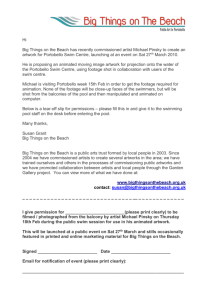

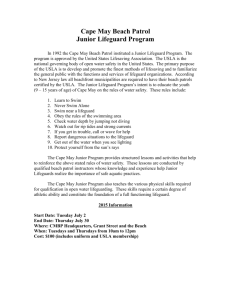


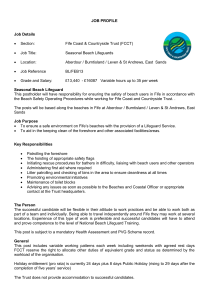
![PERSONAL COMPUTERS CMPE 3 [Class # 20524]](http://s2.studylib.net/store/data/005319327_1-bc28b45eaf5c481cf19c91f412881c12-300x300.png)
